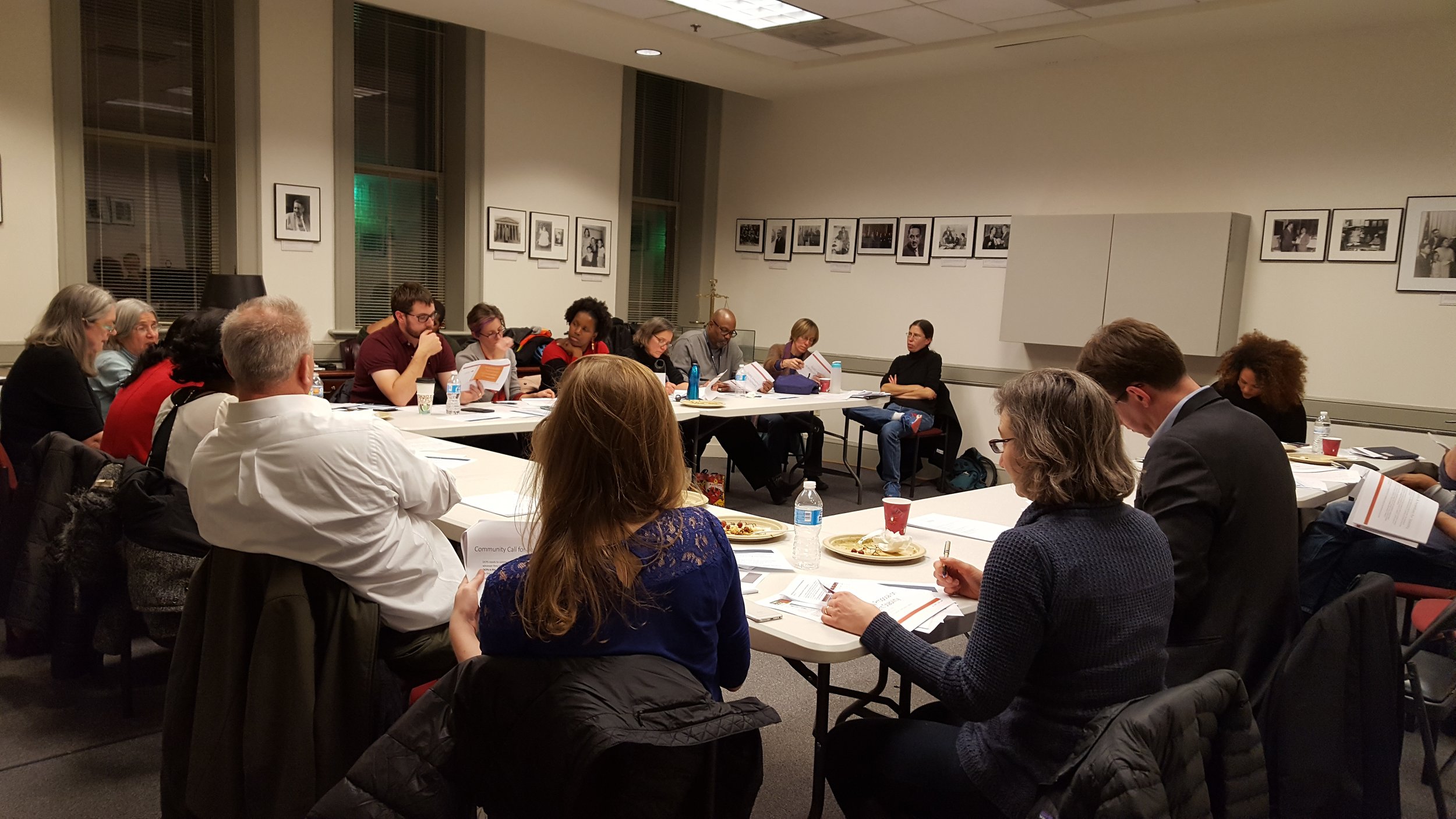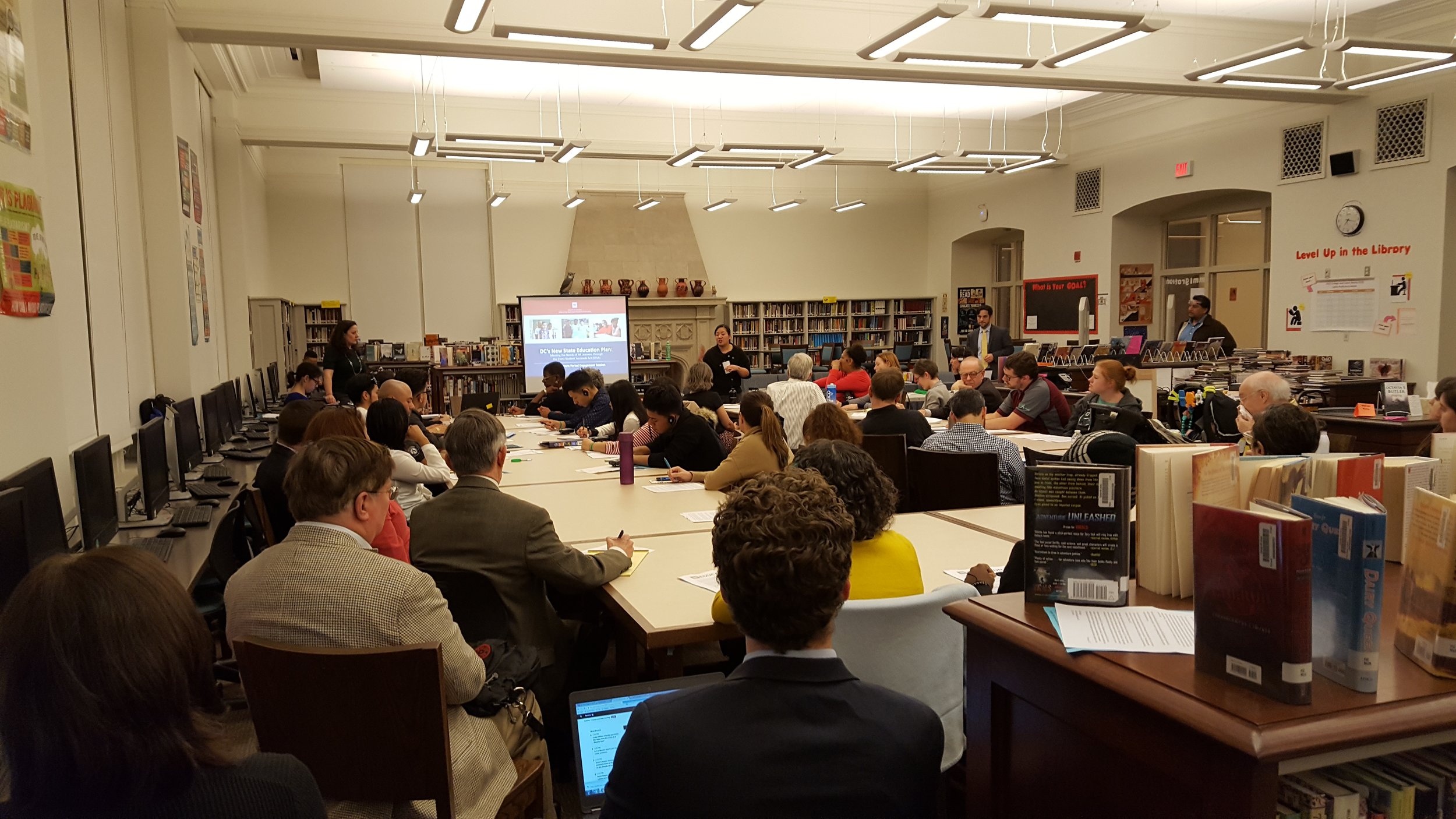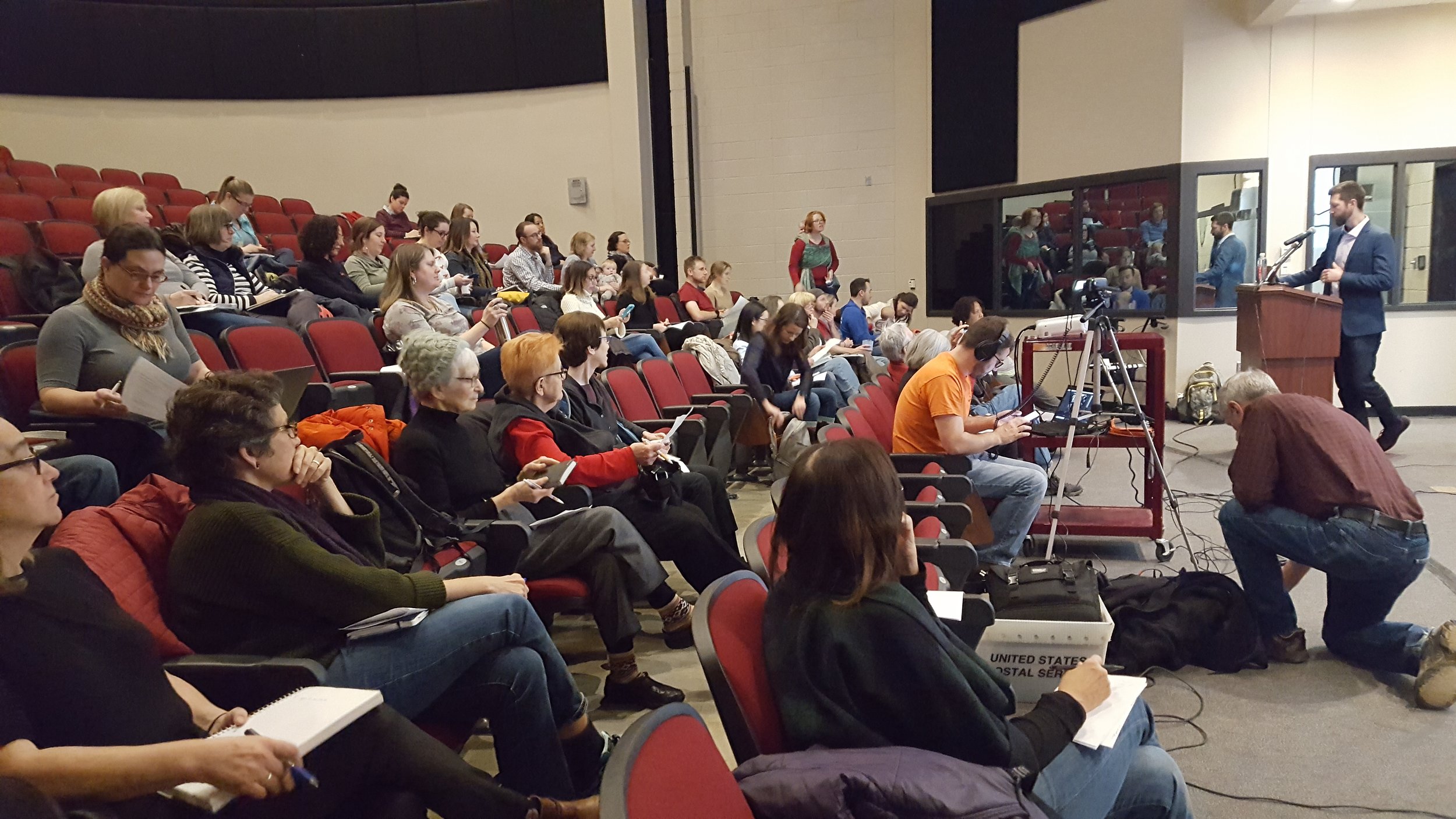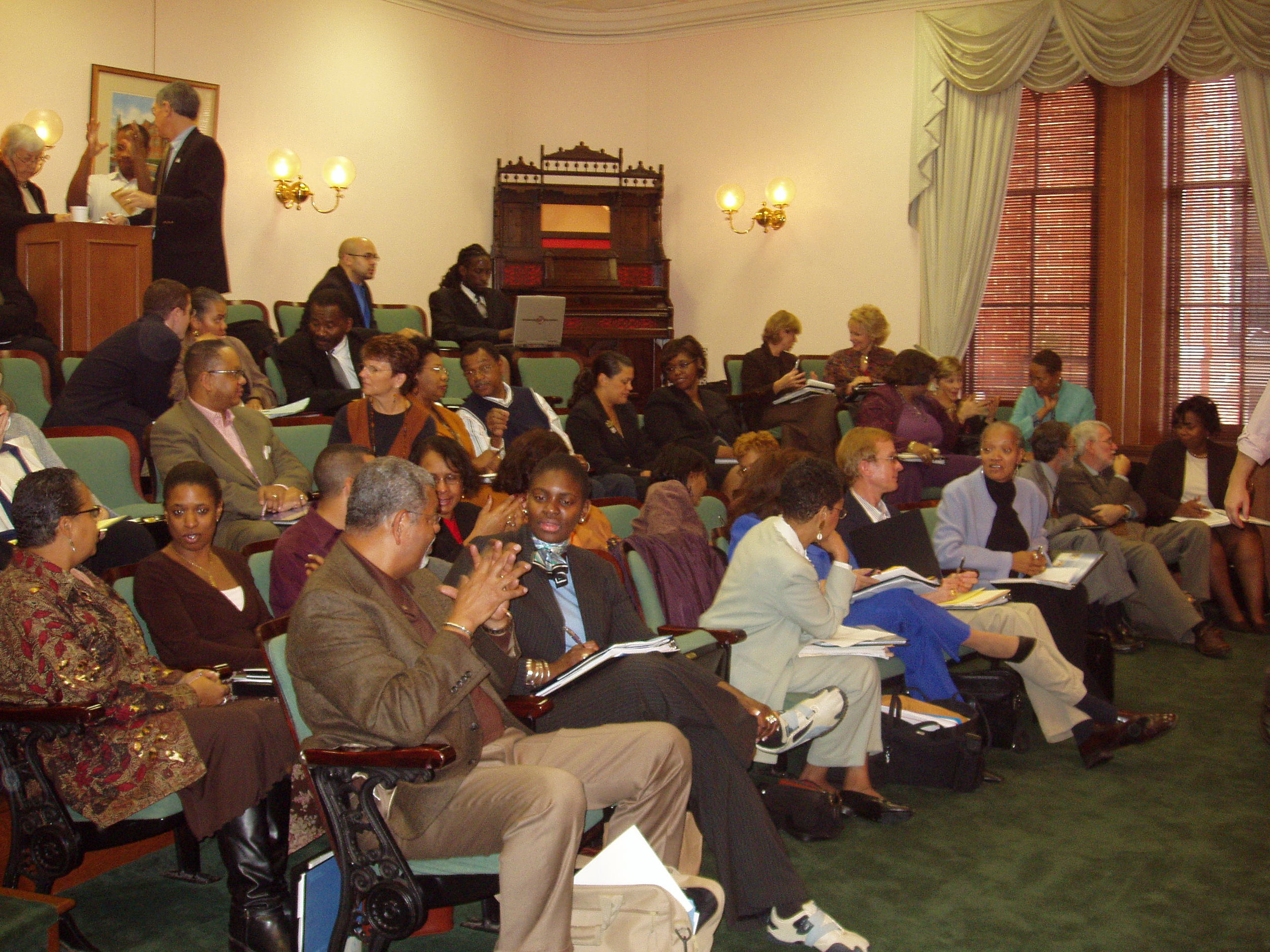C4DC Budget Tool & the FY17 DC School Budget Data in Context
/Last year, C4DC published a web tool to help understand DCPS school budgets. We have updated that tool for the FY17 school budgets.
>> Explore the FY17 DC School Budget tool here
>> Find the methodology and criteria to develop FY17 School Budget Tool here.
(The data reported in the current version of the tool is from the initial school budgets. Once the submitted budgets, reflecting changes in response to individual school petitions, are available we will update using that data.)
At the end of this post, find a general explanation for how the school budgeting process works and an explanation of how the C4DC budget tool operates.
This Year’s DC School Budget Data in Context
The initial budgets added $75 million for DCPS and charter schools combined, as a result of enrollment increases and a 2% inflation adjustment. (See Mayor’s Transmittal Letter, Frame 21). Charters received $46 million of that increase given the significant increase in enrollment in that sector (according to the CFO, growth of 1,991 from 38,962 to 40,953). The other $28.9 million went to DCPS (with growth of 826 from 49,190 to 50,016). (See CFO’s Transmittal Letter, Frames 28-29).
It appears that approximately $19 million of the DCPS increase made its way to DCPS schools. (See Mary Levy's Workbook on the FY17 School Budget.)
Reduced “Buying Power”
Nevertheless, a number of DCPS school communities have indicated that despite nominal increases in their budgets, they have experienced reduced “buying power” – the ability to fund necessary staff positions or provide for supplies. This has not been the case for all schools, but it is a significant enough phenomenon that it bears some explanation.
First, the budgeted costs of positions increased by small amounts, but that adds up over the many positions funded by DCPS schools. The cost of a teacher went up $765, of a Principal by $7,101. Almost all positions went up by some amount. Approximately $6.8 million of the increase to DCPS schools was used to cover the increased cost of positions (see the FY17 DC School Budget Workbook).
Second, DCPS shifted certain costs that had not been carried on school budgets to school budgets. For example, a number of DCPS high schools have two JROTC positions. In past years, the school budgets have funded one position and the other (while the salary was listed), was not included on the school budget: it was paid from other sources. In the budgets for the coming year, the salaries for both JROTC positions are on the school budget, funding for the second position is included in the total, increasing the apparent total budget, but not changing the available staff in the school. Approximately $3.0 million of the $19 million increase to schools reflects such cost shifting from central or other sources to schools (according to the FY17 DC School Budget Workbook).
Third, whileDCPS added dollars for general education programming on the order of $7 million, DCPS created an unfunded mandate that displaced its capacity to deliver approximately $7 million in general education services. The way this worked is that DCPS moved from a Master Educator system of teacher mentoring and evaluation funded from the budget for the Central Office to a school based system – LEAP – funded through school budgets. Outside of the 29 pilot schools where an element of the LEAP program – Teacher Leader Innovation (TLI’s) – is being supported, the LEAP program added responsibilities to schools but not funding. Teacher leaders, selected from current staff, will be mentoring other teachers for a significant part of the day and not teaching. This will increase the teaching load for the remaining staff or necessitate additional staff to cover release time for the Teacher Leader. At the 29 schools (out of over 100 DCPS schools) at which the TLI component of the LEAP program was piloted, DCPS provided approximately $3 million in FY16 to fund “release time” -- to fund staff to back fill when Teacher Leaders are out of their classrooms. Mary Levy has calculated that the new LEAP obligations represent an approximately $7 million unfunded mandate (see the FY17 DC School Budget Workbook).
Additional Programs & Costs
At the same time, the FY17 budget expands certain special programs and adds others (on the order of $12 million) and eliminates or reduces others (on the order of $10 million). (See here). The net increase of approximately $2.25 million represents capacity to deliver additional services. These kinds of programs, however, turn up at some but not all schools.
Thus, the $19 million increase in DCPS school budgets is accounted for by the increased cost of positions ($6.8 million), shifts of costs to school budgets ($3 million), and approximately $7 million in increased funding for general education programming and the net increase of special programs added or expanded and those reduced or cut ($2.2 million). In the meantime, however, the increase in general education spending is offset by the approximately $7 million dollars in general education functions that schools are required to absorb within their budgets associated with the new LEAP mandate.
The net result is that funding in FY17 for schools to do new things, as opposed to paying increases in the cost of positions or cover costs or functions shifted from central to them appears to be on the order of $2.25 million.
DCPS, meanwhile, according to the CFO, saw an enrollment increase of 826 students (see CFO’s Transmittal Letter, Frame 29) and is opening two new schools (MacFarland and Empowering Males).
This is not to be critical of the innovations mandated in this budget. LEAP, hopefully will prove to be a very successful model. School-based employees deserve to see their compensation rise. Reflecting all costs in a school on the school budget makes for greater transparency. Moreover, there will always be a certain amount of evolution and change of programs from year-to-year. But these phenomena together help explain why some schools have experienced both nominal budget increases and staff or service cuts.
In the meantime, as outlined more fully by the DC Fiscal Policy Institute's post, "Are DCPS Low-Income Schools Shortchanged When It Comes to Supplemental Resources for “At-Risk” Students?", DCPS is still grappling with how to distribute “at risk” dollars which are intended under the law to be used to support services for “at risk” students. As such, at risk dollars are intended to supplement, not supplant general education dollars. Unfortunately, there is a pattern of using significant portions of the allocated at risk dollars or general education purposes, thereby merely supplanting general education dollars.
In sum: There is little or no additional buying power
In sum, while not the case for all schools, overall there is little or no additional buying power in the DCPS budget for the local schools for next year. Given the increase in enrollment, the opening of two new schools and the practice of using some of the at risk dollars for general education or entitled purposes, it is not surprising that some schools are experiencing staffing and other cuts, making it more difficult to fully serve their students. Hopefully, to the extent such specific needs are identified, they can be raised in the budget process this spring, and, if needed, solutions can be crafted either in the form of additional appropriations or shifts from the central office to schools.
* * * * * * * * *
BACKGROUND
How the DCPS Budget Process Works
The DCPS budget process is difficult to untangle, involving multiple complex steps.
First, DCPS receives funding from the city through the Uniform Per Student Funding Formula, which assigns a foundation amount to every public school child, supplemented by specific dollar amounts for children with specific characteristics. These funds cover both central office and local school functions. DCPS also receives Title I and Title II federal funds, a portion of which are allocated to individual schools.
Second, DCPS allocates funds to schools using staffing formulas – assigning positions and funding for them based on the number and needs of the children in a school. DCPS deviates from the pure staffing model approach in some instances – specialty, stabilization and per pupil minimum funds.
How the C4DC School Budget Tool Works
The front page of the C4DC Budget Tool shows General Education funding proposed for the coming school year, for this year and the two years compared. General Education funds are local funds intended to serve all children to meet their general education needs. They include enrollment based, specialty, per pupil minimum and stabilization funds.
The second page of the budget tool shows funding from all sources, total funds on a per pupil basis. Often people focus on the total funds a school receives on a per pupil basis. These include local funding specifically targeted for Special Education (SPED), English Language Learners (ELL) or At-Risk Students and federal funds for children in poverty. This can be misleading. Two schools may get very different per pupil amounts because they have different numbers of students within these categories. The width of the bands for SPED, ELL and At-Risk Students shown on the total funds table gives a relative indication of the magnitude of the populations in those categories at each of the schools.
An exploration of the data will show that no two schools receive precisely the same amount per pupil under either measure. Given the differences in students served and the economies of scale for larger schools, that is not surprising. Indeed, there is a predictable pattern (though not an ironclad rule) that larger schools receive lower per pupil funding.
* * * * * * * * *
We are very grateful to Coalition members DC Fiscal Policy Institute, S.H.A.P.P.E., Matthew Frumin and the Dean of DCPS data – Mary Levy – for their work on this project, to DCPS for its cooperation throughout and to Code for DC for its extraordinary and generous work developing this tool.








